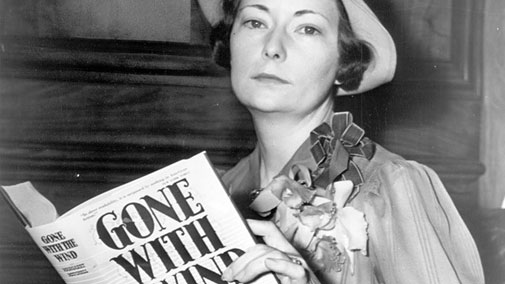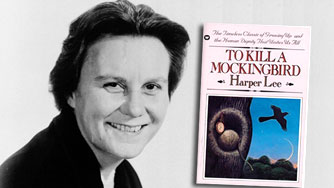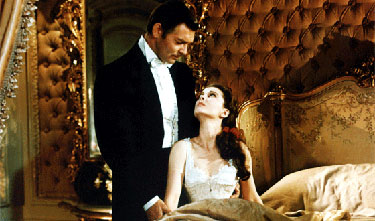
By Tom Brinkmoeller
Those who love splendid American literature will receive a special treat April 2 when American Masters, a PBS series with a strong reputation for serving up consistently delightful programming, pairs profiles of two renowned American authors.

Margaret Mitchell: American Rebel, the life of the author of Gone with the Wind, will be shown at 9 p.m. ET. A profile of the author of To Kill a Mockingbird, Harper Lee: Hey Boo, follows at 10 p.m. ET. (Check local PBS listings for both times and dates).
This high-quality doubleheader is something of a first for the PBS series...
It gives viewers an opportunity, survey-course style, to study, compare and delineate the differences of two female authors' seminal works about history and race in this country.
Susan Lacy is the series' creator and executive producer, and answered our questions, for TV WORTH WATCHING, about how this unusual TV event came about.
The back-to-back pairing of episodes, as is being done with the Harper Lee and Margaret Mitchell American Masters, is an interesting way to program. Is this the first time the series has put two profiles next to each other on the schedule? If not, when and in what way has this happened before?
SUSAN LACY: The back-to-back pairing of these programs, while not a first for American Masters, is still pretty rare. While I have often wanted to do this, our films are usually 90 minutes or two hours in length, making it difficult for this concept to work without it becoming a 3½ or 4-hour block. The only other time I can remember this happening was with a pairing of Marvin Gaye and Sam Cooke, but that was as repeats, not their original scheduling.
Whose idea was it to do this programming -- PBS, yours, a mutual consensus?
Lacy: I presented the notion of scheduling these films together to PBS and they responded positively to the idea immediately. I am delighted, and hope we will be able to do more of this in the future.
Any plans to do this kind of thing again? If yes, what and when?
Lacy: At the moment, we are in discussion with PBS about scheduling some related, repeat programming around the premiere broadcast of our film on David Geffen -- sort of a six degrees of separation kind of thing. This might include our films on Joni Mitchell, an Asylum records artist and former housemate of Geffen's, as well as our film on Ahmet Ertegun and the story of Atlantic Records.
As people watch the two programs, aside from the fact that they are about the authors of two iconic novels, what do you think the pairing will teach about similarities and differences in the two women? In their lives? In their literary styles?

Lacy: Aside from the fact that these films are both about Southern women who each wrote one novel, there are interesting similarities, as well as significant differences in the two women. Obviously, both novels dealt with racial issues, but each woman was writing in the context of the time in which their novels took place.
During the pre-Civil War era, slavery was an accepted fact of life in the South, and Mitchell was writing about that era. The novel has been criticized for its romantic portrayal of that institution, but as we have learned, Mitchell secretly created a scholarship program for African American medical students, so she was not a racist. She was, as she put it herself, writing about an era, changing times and survival, and, while writing about it from a distance, it is still set firmly in that era.
To Kill A Mockingbird, on the other hand, is written during a time when racism was still rampant in the South, but deals with its moral implications and is unapologetically anti-racist.
But both women were ahead of their times, and both challenged the social order in their own ways.
Both women were extremely independent, free-thinkers and feminists before we even knew the word. Both were educated and worked -- one as a newspaper reporter, and one assisting Truman Capote.

Mitchell, however, was outgoing, a dazzling dresser and out there in terms of being who she was, while Harper Lee was completely uninterested in fashion, was serious in her literary interests, and not given to public life -- although she has a remarkable wit when she does display it.
Both drew heavily from their own personalities to shape the characters of Scarlett and Scout (Harper Lee being quite the tomboy), but I suspect they would have been kindred spirits had they known each other.
Both books won Pulitzer Prizes, and both are still among the most loved and widely read books in American literary history.
Mitchell died tragically far too early, and Lee is still among us.
How involved, if at all, were the producers of the two programs in this event?
Lacy: They were not involved at all, but, I think, quite pleased that it was happening.